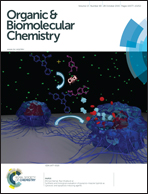Production of chiral compounds using immobilized cells as a source of biocatalysts
Abstract
The importance of chiral compounds in all fields of technology and life sciences is shown. Small chiral molecules are mainly used as building blocks in the synthesis of more complex and functionalized compounds. Nature creates and imposes stereoselectivity by means of enzymes, which are highly efficient biocatalysts. The use of whole cells as a biocatalyst source is a promising strategy for avoiding some drawbacks associated with the use of pure enzymes, especially their high cost. The use of free cells is also challenging, since cell lysis can also occur under the reaction conditions. However, cell immobilization has been employed to increase the catalytic potential of enzymes by extending their lifetimes in organic solvents and non-natural environments. Besides, immobilized cells maintain their biocatalytic performance for several reaction cycles. Considering the above-mentioned arguments, several authors have synthesized different classes of chiral compounds such as alcohols, amines, carboxylic acids, amides, sulfides and lactones by means of immobilized cells. Our aim was to discuss the main aspects of the production of chiral compounds using immobilized cells as a source of biocatalysts, except under fermentation conditions.


 Please wait while we load your content...
Please wait while we load your content...